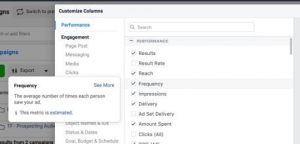— March 29, 2019
We can’t emphasize the importance and value of blogging for your firm enough. It is a primary aspect of content marketing and can establish your firm as a subject-matter expert while driving traffic to your site and generating leads. But how do you know when your efforts are paying off?
Here we outline 5 fundamental key performance indicators for measuring your blog’s success. To get started, we’ll show you a few ways to set up Google Analytics to see your blog traffic.
Set up filters
If your blog is a completely separate, standalone site, then it’s as simple as adding the Google Analytics tracking code to the site. Many firms, however, include their blog as a section of their firm’s website. There are a couple ways to view just blog traffic. These include creating a new view in Google Analytics, adding a new segment to a view, or filtering your Site Content section to only display blog pages. We’ve outlined each of these steps in a pdf.
1. Sessions

One of the main metrics to track for your blog is sessions, which measure overall traffic to your blog. A session is a period of time a user is engaged with your website – so, a visit. Over the course of a week, one recorded user could have multiple sessions to your blog.
It’s important to not just look at the number of sessions, but to track your traffic over time and in context. Compare your traffic month to month to look for growth and for trends. Look at the topics and formats of blog posts from those months that have higher performance and those that have poorer performance, and identify trends. By comparing performance to the type of content, post frequency and distribution strategy, you can better refine your strategy moving forward.
2. Top Posts by Pageviews
This one is pretty straightforward. Keep track of which blog posts garner the most attention by looking at the pageviews for each article. (This is found under Behavior – Site Content – All Pages) Then, use other metrics to help you determine why those posts were the most popular. Did your top post also have a high percentage of Organic Search traffic? Maybe this article was especially well-optimized for search engines. Did the post include video? You may want to consider incorporating more video into your posts. Continuously look at these different metrics together and watch for trends to inform your content strategy moving forward.

3. Average Time on Page
The same tab shows the Average Time on Page – how long, on average, users spend viewing a page. You can track the overall average for all of your pages as well as the average time spent on each individual page. This is a great measure of engagement and the relevancy of your content to your audience. If one post has a really low average time on page, it could be that the article isn’t what users were expecting from the preview, or the introduction or copy in general may not be very engaging. Compare your articles with the lowest average time to those with the highest, and look for themes in content type, length, formatting, headlines, etc.
Other metrics you may want to track to gauge engagement are Average Pages per Session and Average Session Duration – both indicating how well you are delivering value through your content and making it easy for people to navigate through your site to see more.
4. Traffic Channels
It’s important to know how your visitors are reaching your blog. In Google Analytics, the default acquisition channels are divided into Organic Search, Direct, Referral, Email and Social. Traffic from Organic Search measures users who come to your blog through a search engine, so oftentimes, organic traffic indicates SEO effectiveness. Break it down by individual pages, and those that have a high percentage of traffic from organic search are probably optimized well, while those that have a low percentage may need to be optimized for search.
You can also periodically check your SERP ranking for various topics for which you’d like to rank. For example, if you search “AEC marketing” in Google, our 2019 AEC Marketing Trends blog post appears. As you analyze and improve your SEO strategy, you should see your blog move farther up on the results page.

- Direct traffic represents returning users, as this would include people who are typing the URL directly into their address bar. When looking at the direct traffic for specific posts, a higher percentage of returning visitors indicates content that may be relevant to your frequent readers.
- Email traffic consists of your blog subscribers, so it can help provide insight into popular blog posts among your subscriber base.
- Referral traffic is traffic which comes from any other site, and you can view all the different sources by going to Acquisition – All Traffic – Channels – Referral. You can add a secondary dimension to see the individual blog pages to which the sources are directing, or view this by adding “Source” as a secondary dimension in the Behavior – Site Content – All Pages tab.
- Social traffic, of course, records users who visit your blog through a link on social media. This is likely a mix of returning and new visitors, as they could be accessing your blog because they follow you or because a friend shared your post. You can see which platforms are driving the most traffic, and to which blog posts. You can also glean some insights by logging into the social platforms directly and viewing their internal analytics. For example, open up your Facebook page Insights to see the reach and engagement of your posts. If you shared a link to one of your blog articles in the post, it shows the amount of link clicks (not post clicks!) from the post.

5. New vs. Returning Visitors
The hope is that your content delivers enough value that users want to come back to your blog to view other articles. As mentioned above, email and direct traffic are good indicators of returning user traffic. In Google Analytics, the Audience Overview tab shows you the ratio of new vs. returning users. For your blog to grow, you need an increasing number of people returning and subscribing to your blog, as well as new people finding your blog. To dig deeper into returning visitor analytics, go to Audience – Behavior – New vs. Returning, where you can track the number of users and sessions from returning visitors. If this number is increasing, then you’re creating content that’s growing your audience and drawing them back to your blog. Additionally, you can click into the Returning Visitors and add a secondary dimension to determine which articles are attracting the most users back to the blog.
Demonstrate the value of your efforts
As you start to gather data, compare it from month to month, and identify trends, you’ll be able to draw conclusions on what performs best and better inform your strategy. And, as you chart the KPIs and see areas of growth or success over time, it’s helpful information you can present to your executives to demonstrate the importance of and ROI that comes from your thought leadership efforts.
Digital & Social Articles on Business 2 Community
(58)







